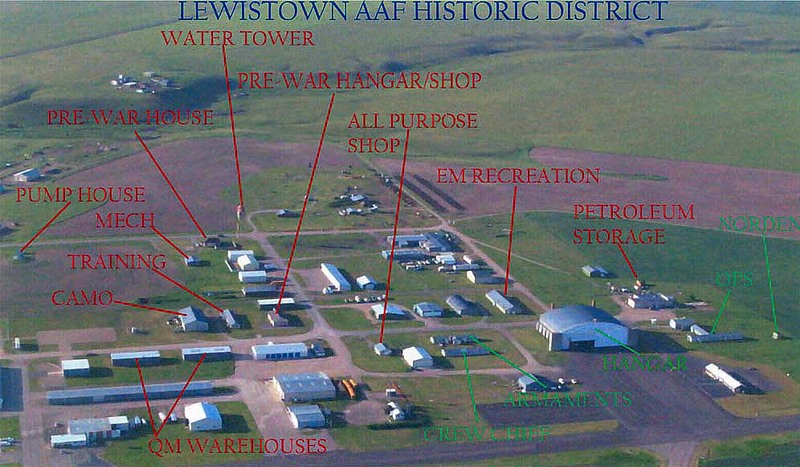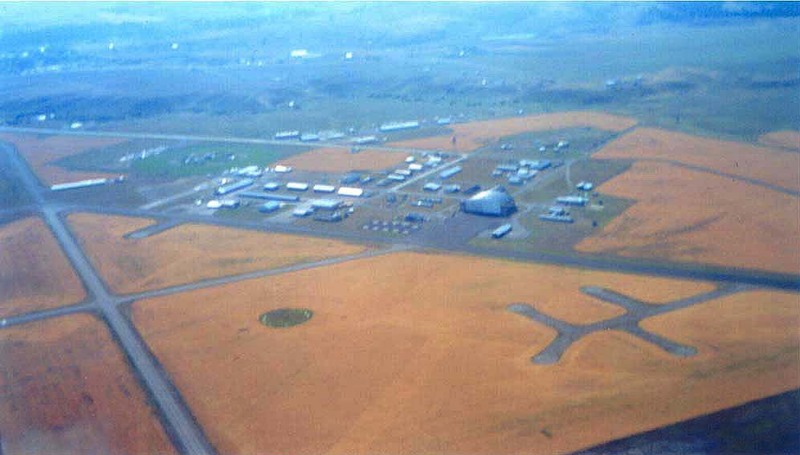Lewistown Satellite Airfield Historic District

In the dark days following the December 7, 1941, attack on Pearl Harbor, Congress appropriated massive defense appropriations. The US Army selected Great Falls, Montana, as the site of a major air base. Concurrent with its construction were satellite airfields at Cut Bank, Glasgow, and Lewistown. On October 28, 1942, the first Boeing B-17 Flying Fortresses roared over Lewistown’s Main Street with their bomb bays open, buzzed the treetops, and landed at the Lewistown Airfield. Crews trained day and night combining navigation, bombing, and gunnery practice. The men familiarized themselves with all aspects of the B-17 and trained with the top secret Norden bombsight, a computerized aiming device that reportedly could “put bombs in a pickle barrel.” After one to three months of instruction, aircrews then flew directly to join the air war in Europe. Nearly 1,000 GIs trained at the Lewistown Airfield. They became a welcome part of the community, married local girls, and won the hearts of the townspeople. Many never came home. B-17s carried 4,000 pounds of bombs and served in every World War II combat zone, but casualties among bomber squadrons were horrific. A single mission over Germany in October 1942 claimed 60 B-17s and 600 lives. The Lewistown Satellite Airfield was deactivated after eleven months of service. As the US Department of Defense systematically removes “temporary” World War II buildings, this Airfield is a rarity and its intact Norden bombsight storage shelter is the only known identifiable example remaining in the United States.
Images



